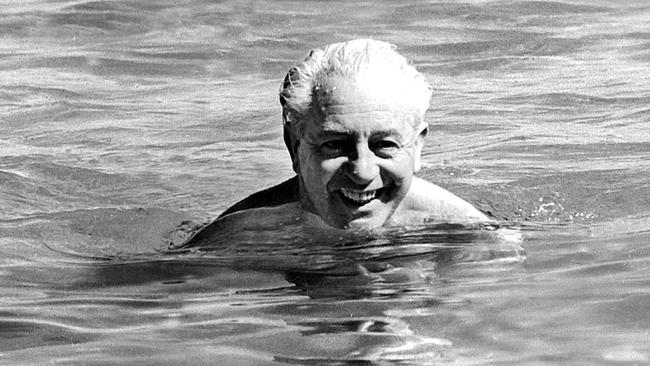Phineas Gage suffered a head injury that ought to have killed him instantly—but it didn’t.
Although he survived a gory accident with an iron rod while working as a construction foreman, Phineas would come out of the ordeal an entirely different man.


The bloody accident, caused by explosives, saw the metal pierce his skull, shooting right through it. The iron rod had decimated most of Phineas’ left frontal lobe and left part of his brain exposed.
Despite it being considered a life-ending injury, Phineas would overcome the loss of his left eye and part of his brain. But at what cost?
The Gruesome Incident
There is little public information about Phineas Gage prior to his accident. He was born in 1823 and was one of five children born to the Gages in Grafton County, New Hampshire.
Phineas grew up to be less than average in height and build, which makes his feat of surviving the unsurvivable even greater.
He had no extraordinary physical attributes that would save him from the iron that would penetrate his skull in the years to come.
As his physician John Martyn Harlow would later put it, Phineas had “excitable and active mental powers” that allowed him to endure “great mental and physical labor.”
These traits would see him go on to work with dangerous explosives, and in the summer of 1848, he was employed on the construction of the Hudson River Railroad in New York.
This led to his employment as a foreman with the Rutland and Burlington Railroad Company. One of his roles was to clear rocks, ensuring the ground was level enough to build railroad tracks on.
To do this, Phineas would drill a hole into the rocks and place an explosive charge inside. He would then fill that with gunpowder and set the fuse. To stop injury from the explosion, sand would be poured on top before a rod was used to pack the explosives into the rock.
It was a process Phineas had carried out hundreds of times before. However, on September 13, 1848, he would carry out this duty differently, and it would change his life forever.
At a site near Cavendish, Vermont, Phineas tamped down the powder inside the rock like normal. However, on this occasion, he did so without the addition of sand.
While using his tamping rod, which was about 1 meter in length and just over an inch in diameter, it struck against the side of the rock he was packing, igniting the gunpowder.
With no sand in place to conceal the blow, the iron rod was shot violently through the air and pierced Phineas’ head. It went in underneath his left eye and came out at the top of his skull. It had literally shot a hole in his head.
Miraculously, Phineas remained conscious and was able to talk coherently after the explosion. Still, the aftermath was bloody.
Phineas was flung onto his back before being picked up on his feet by fellow workers. He was seated in an oxcart, which took him just under a mile to his hotel in the nearby town. He had to sit and wait here for half an hour while aid was on its way.
It’s reported that around this time, Phineas made a note in his journal detailing his workers’ hours and
It’s reported that around this time, Phineas made a note in his journal detailing his workers’ hours and wages. Despite the gory and life-threatening accident he’d just endured, he was still concerned with the accurate bookkeeping of his employees’ pay.
When the doctor eventually arrived, Phineas greeted him by saying, “Doctor, here is business enough for you.”

While his comment was in jest, Phineas wasn’t entirely joking. The doctor was amazed by the hole in his patient’s head and even more amazed by the fact he was still conscious.
However, despite Phineas’ ability to joke, he was still bringing up and swallowing a lot of blood. At one point, he vomited, and the pressure of this caused some of his brain to fall out of the open wound.
It was anticipated that Phineas wouldn’t be alive for much longer.
The Medical Marvel
Phineas was taken to hospital, where it was assumed his life would end within hours. Still, it was important to remove the coagulated blood, small bone fragments, and protruding brain from his wound.
The gaping wound was then closed with adhesive straps, leaving room for drainage. The laceration on Phineas’ cheek was mostly left untouched, with a bandage lightly covering it to stop it from getting infected. He was propped upwards in the hospital bed to keep his head elevated.
To doctors’ disbelief, he lived for days after the incident, but when an infection set in and Phineas’ brain swelled dangerously, it seemed their prediction of death was about to come true. He was even measured for a coffin.
His physician, John Harlow, would do his best to ensure Phineas not only survived but would make a full recovery.
Just 10 weeks after the incident, Phineas returned to his parent’s farm in New Hampshire. He had lost an eye and endured a traumatic event, but nonetheless, his memory, his ability to converse, and his motor skills remained.
To the doctors and nurses who’d treated Phineas, they believed he’d made a full recovery. However, those closest to Phineas knew he was no longer the man he was before the accident. He’d changed.
Prior to his head injury, Phineas was a stickler for timekeeping. After the incident, he wouldn’t stick to plans, let alone show up on time.
Before his accident, Phineas was known to be polite, reserved, and mild-mannered. Post-accident, Phineas was crude and foul-mouthed.
While he, for the most part, still looked like Phineas, he no longer acted like the man people once knew.

Phineas’s personality appeared to have changed despite his conversational skills being considered normal. Where he was once considered a good businessman who was clever with his money, now Phineas had become irrational about these aspects of his life.
At one point, Phineas was observed collecting pebbles from a stream. His physician decided this would provide a good foundation for testing Phineas’ new persona.
He offered his patient $1000 for the small, worthless pebbles. Previously, Phineas would have agreed to the trade, but the new Phineas refused to part with his pebbles for any sum of money.
Phineas’ friends put it more bluntly: they said, “Gage is no longer Gage.”
It also appeared Phineas had lost his former work ethic and ability to work under pressure. The foreman was unable to return to his old job due to his employer refusing to reinstate him. So, he had to take on various farm jobs.
This didn’t seem to upset Phineas: since his accident, he had a newfound appreciation for animals. Prior to the injury, Phineas didn’t care for animals at all. Now, he loved spending time with just about any animal he encountered.
There would have been a lot of money waiting for Phineas had he joined the circus. At the time, P.T. Barnum’s traveling show was the most famous circus in America, though Phineas declined to join. He did, however, exhibit himself at the “freaks” museum in New York for a period.
In a macabre element of his act, Phineas would show you his brain pulsating if you gave him an extra dime.
After his museum exhibition, the facts about Phineas’ life become uncertain. However, there was a mainstay in his extraordinary story—rumors about his deteriorating mental condition.
Phineas’ Mental State
The fact that Phineas survived such a brutal accident was enough to have people speculating that his story wasn’t entirely true. When Phineas lived for years after the near-fatal incident, rumors and conspiracies swirled.
Now, we have the Internet and social media to help us find facts. Back in the 1800s, word of mouth was used, and judging by some of the stories spread about Phineas, word of mouth wasn’t always reliable.
One rumor suggested that Phineas was nothing more than a scammer who sold the rights to his skull to a medical school.
According to the rumor, he did the same to several medical schools, cashing the check for each one with no intention of leaving his skull to them after his death.
Another enduring rumor was that Phineas left the iron rod in his wound in the years after the accident.
One of the more intriguing aspects of the rumors is the vast difference in Phineas’ temperament, depending on the source. Some people say he became violent and ill-tempered. Others say this isn’t the case: Phineas became insular and emotionally subdued after the accident.

The rumors about Phineas’ fiery temper do fit in with John Harlow’s observation that the patient had newfound “animal propensities.” Though this is a vague description, it could be that John was referring to aggressive behavior he’d observed from Phineas.
Many noted Phineas’ ability to tell entertaining stories that were, more often than not, untrue. He would spin wild tales about his life on the road as a foreman, which were sometimes untruths. This caused some to label him a chronic liar because of his brain injury.
Due to these rumors and unfounded claims, Phineas has been labeled as something of a “villain” after the incident, although nobody has any factual basis for this, just unverified stories. None of these, however, came from his friends or family.
The Latter Years of Phineas’ Life
In 1852, Phineas left his parents’ farm and moved down to Chile in South America.
Here, he found work driving a horse carriage, which worked well since he had a new appreciation for horses. He would take passengers through the mountainous trails between Valparaiso and Santiago.
Phineas managed to keep this job for seven years, which is quite the feat when you consider he was expected to die from the trauma to his brain.
Now, he was managing six horses, remembering routes, greeting and conversing with passengers, taking fares and giving correct change, and taking care of the horses between traveling.
This wasn’t an easy job to begin with, let alone for someone with a big part of their left frontal lobe missing.
However, after seven years as a carriage driver, poor health caught up with Phineas. His family had since moved to San Francisco, so Phineas moved there to be with them.
Upon seeing Phineas, his mother proclaimed him to be looking “feeble.” Again, he found farm work and seemed to be improving. For a year, Phineas seemed to be thriving.
Then, a seizure stopped him in his tracks. After a brief resting period, Phineas was able to return to work.
However, in the summer of 1860, at his mother’s home, he suffered seizure after seizure, and this time, he wouldn’t come around. He died May 21, aged just 36.
He was just 24 when he suffered his brain injury, meaning he’d survived 12 years longer than anyone had expected him to.
Years after his burial, Phineas’ skull was exhumed by doctors. His skull and the iron tamping rod that caused his injury are currently on display at Harvard University.
Until the day he died, Phineas carried the iron rod with him wherever he went as a macabre reminder of his ordeal.
Sources
https://www.ncbi.nlm.nih.gov/pmc/articles/PMC1114479
https://www.simplypsychology.org/phineas-gage.html
https://www.smithsonianmag.com/history/phineas-gage-neurosciences-most-famous-patient-11390067













Leave a comment